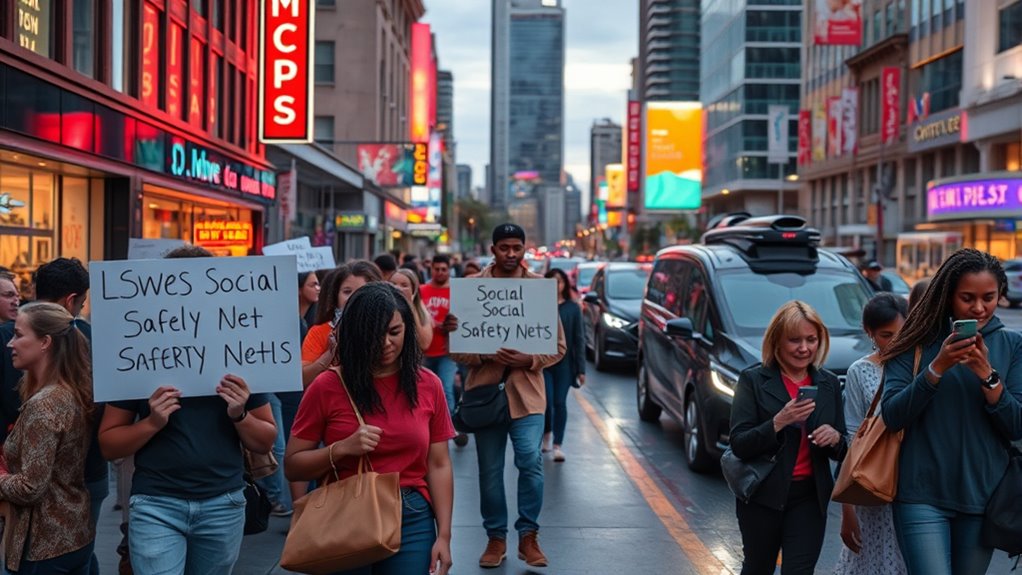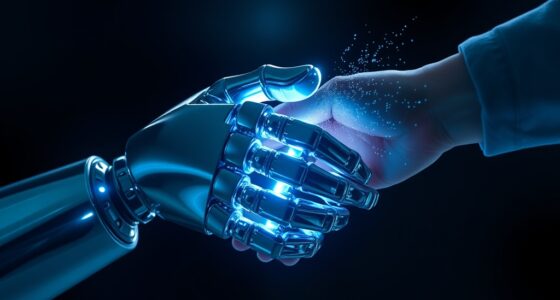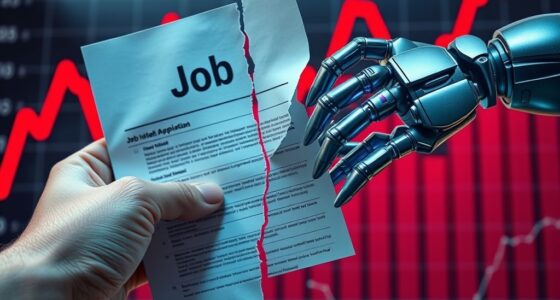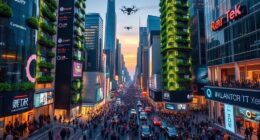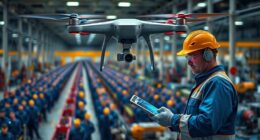Funding Safety Nets on an Exponential Wealth Curve
Post‑Labor Economics Series • Policy Brief • August 2025
Executive Snapshot
Payroll taxes still fund roughly 40 % of public revenue across the OECD—but labor’s share of income keeps falling, and generative‑AI adoption is accelerating the slide. Illinois is already debating a Guaranteed Income Law financed in part by automation levies (SB 3462) , while economists from India to the EU are floating “robot‑tax” and compute‑levy proposals .
A new social contract is emerging gradually, funded not by wages but by:
- Compute and kilowatt levies on AI inference.
- Automation dividends—profit‑sharing linked to robot capital.
- Carbon (or data) fee‑and‑dividend schemes that return revenue as per‑capita cash.
The challenge: phase these in before wage erosion detonates public finances.
1 | Why Payroll Can’t Carry the 21st‑Century Welfare State
| Indicator | 2000 | 2024 | Trend |
| OECD labor share of income | 58 % | 52 % | ↓ 6 pp |
| Average wage‑tax dependence (OECD) | 46 % of revenue | 41 % | ↓ 5 pp |
| AI/robot capital stock (US, est.) | $0.4 T | $3.3 T | 8× |
Projection: Even with stable GDP growth, a further 10‑point drop in labor share by 2035 could leave a $500 bn annual gap in U.S. Social‑Security finances.
2 | Funding Pillars of the Gradual New Contract
2.1 Compute & Kilowatt Levies
How it works: 0.2 ¢/kWh or $0.05 per 1 000 GPT‑class tokens.
Revenue potential: A levy on the 25 TWh U.S. AI datacenter load in 2024 would generate $50 m; at projected 2030 loads (≈ 110 TWh) it rises to $220 m.
Use‑case: Fund inclusive‑income triggers—automatic cash transfers when a sector’s automation share exceeds 25 %.
2.2 Robot/Automation Tax Credits & Dividends
Legislative signal: Illinois SB 3462 authorizes a state‑run guaranteed‑income pilot, financed partly through future automation assessments .
Global echo: Indian economists lobbied for robot‑tax language in the FY 2025 budget .
Policy design: A 1 % valuation fee on humanoid robot capex, rebated to displaced‑worker transition accounts.
2.3 Carbon (or Data) Fee‑and‑Dividend
Precedent: EU citizen initiative on carbon fee & dividend (2019) laid groundwork for returning revenues directly to households .
Post‑labor twist: Pair carbon fee with data‑dividend—cloud providers pay royalties for training on user data, distributed per capita.
2.4 Wage‑Insurance 2.0
Evidence: 2024 CMU–NY Fed study shows wage‑insurance top‑ups speed re‑employment and reduce scarring .
Funding: Redirect 10 % of compute levy to two‑year wage‑insurance pool.
3 | Gradual Triggers—Automatic Stabilizers for an Exponential Age
| Trigger | Data Source | Policy Response |
| Automation share ≥ 25 % of sector tasks | Labor‑statistics + cloud‑compute billing | 5 yr robot‑tax activation; inclusive‑income top‑up |
| Labor‑share drop ≥ 2 pp YoY | National accounts | Shift 1 % payroll tax to capital gains/compute levy |
| AI kilowatt load > 10 % of grid | Grid operator telemetry | Demand‑response credits + excess‑profit levy for welfare fund |
Gradual triggers turn exponential technology curves into stepwise policy shifts—avoiding shock therapy.
4 | Implementation Timeline (2025‑2032)
| Year | Milestone |
| 2025 Q4 | Illinois Guaranteed Income Law vote; pilot $600/mo for 3 000 residents. |
| 2026 | EU Commission white paper on Compute Contribution—options for 0.05 €/kWh levy. |
| 2027 | India Finance Act includes 0.5 % robot‑capex surcharge; funds national reskilling trust. |
| 2028 | OECD issues model Automation Dividend Statute for member states. |
| 2029 | Canada launches national wage‑insurance scheme, funded by widened GST on cloud AI services. |
| 2030–32 | Majority of G20 adopt mixed payroll/compute tax base; wage share stabilizes at 45 %. |
5 | Corporate Strategy—Pre‑Empt and Participate
- Disclose automation impact—voluntary Automation Balance Sheet shows jobs displaced, jobs created, reskilling spend.
- Opt‑in dividend schemes—share 1 % of automation profits with community workforce funds ahead of mandates.
- Hybrid wage + compute taxes in forecasting—budget for a 3 % effective rate shift by 2030.
6 | Risk Matrix
| Risk | Likelihood | Impact | Mitigation |
| Capital flight to low‑levy zones | Medium | High | G20 alignment, WTO digital‑services addendum |
| Levy over‑reach stifles innovation | Medium | Medium | Sunset clauses and credit offsets for R&D |
| Administrative complexity | High | Medium | API‑based tax reporting from cloud providers |
| Public distrust of data royalties | Medium | High | Transparent per‑capita payout dashboards |
7 | Conclusion—Paying for Post‑Labor Prosperity
A new social contract is forming not with a bang but with phased levies and dividends that track automation’s advance.
Linking safety‑net funding to compute, carbon, and robot capital ensures that as machines earn more, society’s floor rises too—without choking the innovation flywheel.
Policymakers: Bake automatic triggers into fiscal codes now.
Executives: Treat compute and robot levies as predictable line items, not random shocks.
Next Step: Join our Automation Dividend Working Group—I’m drafting model legislation and compute‑levy API specs with finance ministries and cloud providers. Subscribe at thorstenmeyerai.com/newsletter for the consultation draft.
Citations
- Illinois General Assembly. SB 3462—Guaranteed Income for Illinois Program. May 2025.
- Outlook Business. “As AI Displaces Jobs, Is a Robot Tax Imminent in India?” Feb 2025.
- Economic Times. “Economists Pitch Robot Tax for Budget 2024.” Nov 2024.
- OECD. The Taxation of Labour vs Capital Income. Apr 2025.
- CMU–NY Fed–UC Berkeley. “Wage Insurance for Displaced Workers.” Jun 2024.
- EU Citizens’ Initiative. “Carbon Fee & Dividend for Europe.” Archive, Jul 2019.
